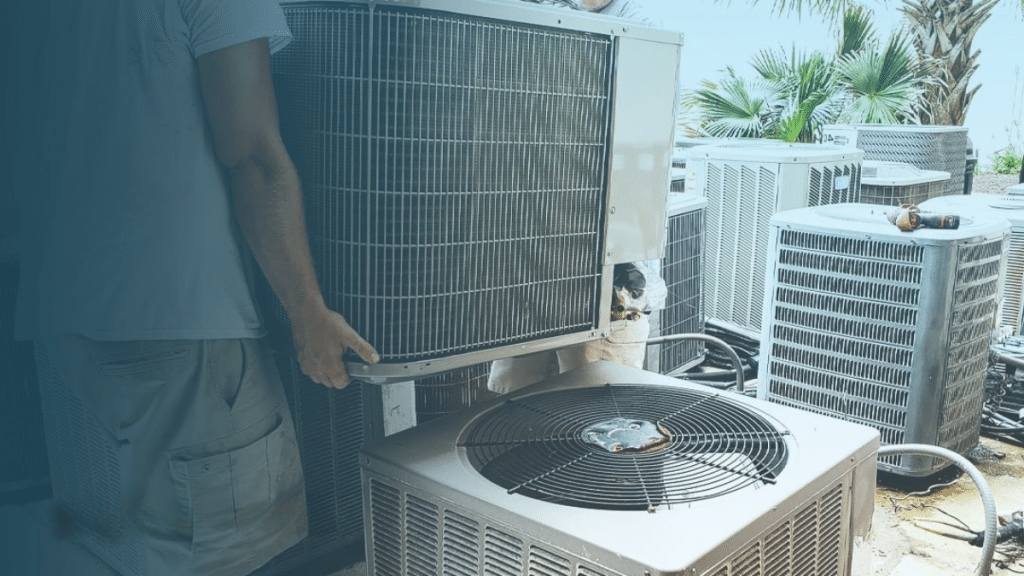The world now runs on cool air. From server rooms humming in the cloud to homes battling hotter summers, air-conditioning demand has skyrocketed. Alongside comfort comes a quieter crisis: millions of retired window units, rooftop chillers, and commercial split systems piling up in scrapyards each year. Recycling air conditioners is no longer a niche sustainability project—it’s an environmental, regulatory, and reputational imperative that forward-thinking businesses and communities cannot ignore.
1. A Growing Wave of Climate-Warming Gases
Most air conditioners built in the last two decades rely on hydrofluorocarbon (HFC) refrigerants—potent greenhouse gases with global-warming potentials hundreds to thousands of times greater than CO₂. In 2022, emissions tied to space-cooling equipment—including leaked refrigerants—accounted for roughly 3.2 % of the planet’s total greenhouse-gas output.
When an old unit is dumped or crushed without first recovering its refrigerant, those HFCs escape directly into the atmosphere. The climate penalty is immediate and irreversible: a single 1-ton rooftop package can contain enough R-410A to equal the annual carbon footprint of an average passenger car. Recycling programs that capture and reclaim these gases break that chain of harm, preventing tons of CO₂-equivalent emissions at the source.
2. Aligning With the Global HFC Phasedown
The Kigali Amendment to the Montreal Protocol—and, in the U.S., the American Innovation and Manufacturing (AIM) Act—requires an 85 % phasedown of HFC production and consumption by 2036. Regulators are backing those targets with tighter allowance quotas, mandatory record-keeping, and steep penalties for venting refrigerants. Proper end-of-life management therefore protects organizations on two fronts: climate stewardship and legal compliance.
Recycling facilities recover refrigerant for purification (reclamation) or safe destruction, enabling industry to meet shrinking quotas without tapping virgin supply. EPA data already show a 20 % year-over-year jump in reclaimed HFC volumes in 2023, proof that circular refrigerant markets are gaining traction.
3. Conserving Finite Raw Materials
Beyond refrigerant, dismantled air conditioners are treasure troves of:
- Copper tubing and wiring—highly conductive and endlessly recyclable
- Aluminum fins and steel chassis—energy-intensive to mine but simple to re-smelt
- High-grade plastics and electronic controls—feedstock for new housings and components
Extracting these materials through recycling consumes far less energy than mining and refining virgin ore, cutting additional greenhouse emissions and slowing resource depletion. Companies that integrate HVAC asset-recovery contracts into their procurement cycles can shrink their embodied-carbon footprints without sourcing constraints.
4. Protecting Worker and Community Health
Cutting open a sealed system releases more than climate gases. Residual compressor oil can carry toxic additives, while older equipment may harbor ozone-depleting chlorofluorocarbons (CFCs) and hydrochlorofluorocarbons (HCFCs). Licensed recyclers use closed-loop recovery machines and approved cylinders to capture these substances before shredding any metal, eliminating worker exposure and preventing soil and groundwater contamination near disposal sites.
5. Meeting ESG Expectations and Stakeholder Trust
Investors, tenants, and regulators increasingly view end-of-life electronics and HVAC equipment as a litmus test of true sustainability, not marketing fluff. Transparent recycling audits—detailing volumes recovered, refrigerant reclaimed, and materials diverted from landfill—strengthen environmental, social, and governance (ESG) reporting. They also dovetail with popular frameworks such as the Task Force on Climate-related Financial Disclosures (TCFD) and the Global Reporting Initiative (GRI), which call for clear metrics on hazardous-waste avoidance and emissions reduction.
6. The Bottom Line
Every retired air-conditioning unit represents a crossroads: a conduit for additional climate damage or an opportunity to lock in measurable environmental gains. Responsible recycling closes the loop—recovering high-value materials, preventing harmful refrigerant emissions, and keeping businesses ahead of fast-evolving regulations. With global cooling demand set to triple by 2050, embracing comprehensive air-conditioner recycling today is one of the most effective—and immediate—steps organizations can take to safeguard both the planet and their own reputations.
